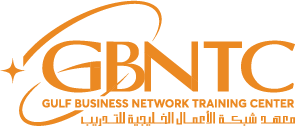Training serves to improve skills, knowledge, and comprehension. And thereby enhances safety, productivity, and much more. In other words, it serves as a great strategic partner.
An effective training program requires certain key program elements including tasks, competencies, learning objectives, learning experiences, evaluation criteria, and evaluations. Tasks and competencies are inseparable. Competencies guide development of learning objectives and evaluation criteria which in turn drive the development of learning experiences and evaluations, respectively. Maintaining the connections between key program elements helps ensure the link between training and work performed on behalf of the business.
Tasks are a fundamental element of a training program. They break work down into its constituent parts. They can be assigned to an individual and it can be determined if a task was completed. A task is comprised of an action and an object.
Competencies flow from a task. There are three types of competencies: skill, knowledge, and comprehension. Competencies must be directly related to a task in order to maintain their connection with work. Otherwise, if the work changes, the competencies required to perform the work as defined by the tasks will invariably fall out of sync with learning experiences and evaluations.
Evaluation criteria define the means for assessing if someone can perform a task. The evaluation criteria are based on the task-condition-standard statement. This means that the performance must be under the specified conditions and meet the specified standards.
Evaluations provide the tools for evaluating competence associated with performance of the task. Performance observations and simulations work best for assessing skills because the evaluator can actually see the subject perform the task. Written tests work well for evaluating knowledge represented by facts. And, interview sessions are useful in assessing comprehension because a thorough understanding of concepts is more easily revealed in a discussion format.
Learning objectives are similar to evaluation criteria in that they utilize the task-condition-standard statement. The subject should be able to fulfill this requirement at the completion of the learning experience. There may be multiple learning objectives just as there could be multiple evaluation criteria.
Learning experiences serve to deliver competencies. These include a full range of online learning options, classroom situations, simulations, and on the job training. A good rule of thumb and still an effective approach to the learning experience is for the learner to
(1) see the task performed;
(2) perform it with help; and then
(3) perform it without help.
Often forgotten in the administration of an effective training program is the environment in which it exists. The delivery of training changes behavior and a behavior change inherently relates to a cultural shift. Culture doesn’t change overnight and numerous factors that exceed the scope of training are involved.
Training is an effective means to improve competencies and the overall culture but it serves best as a strategic partner and cannot operate effectively in isolation of other business systems and processes.
________________________________


No responses yet